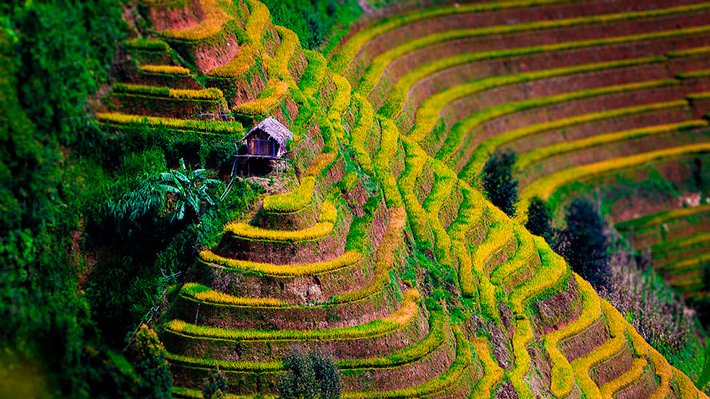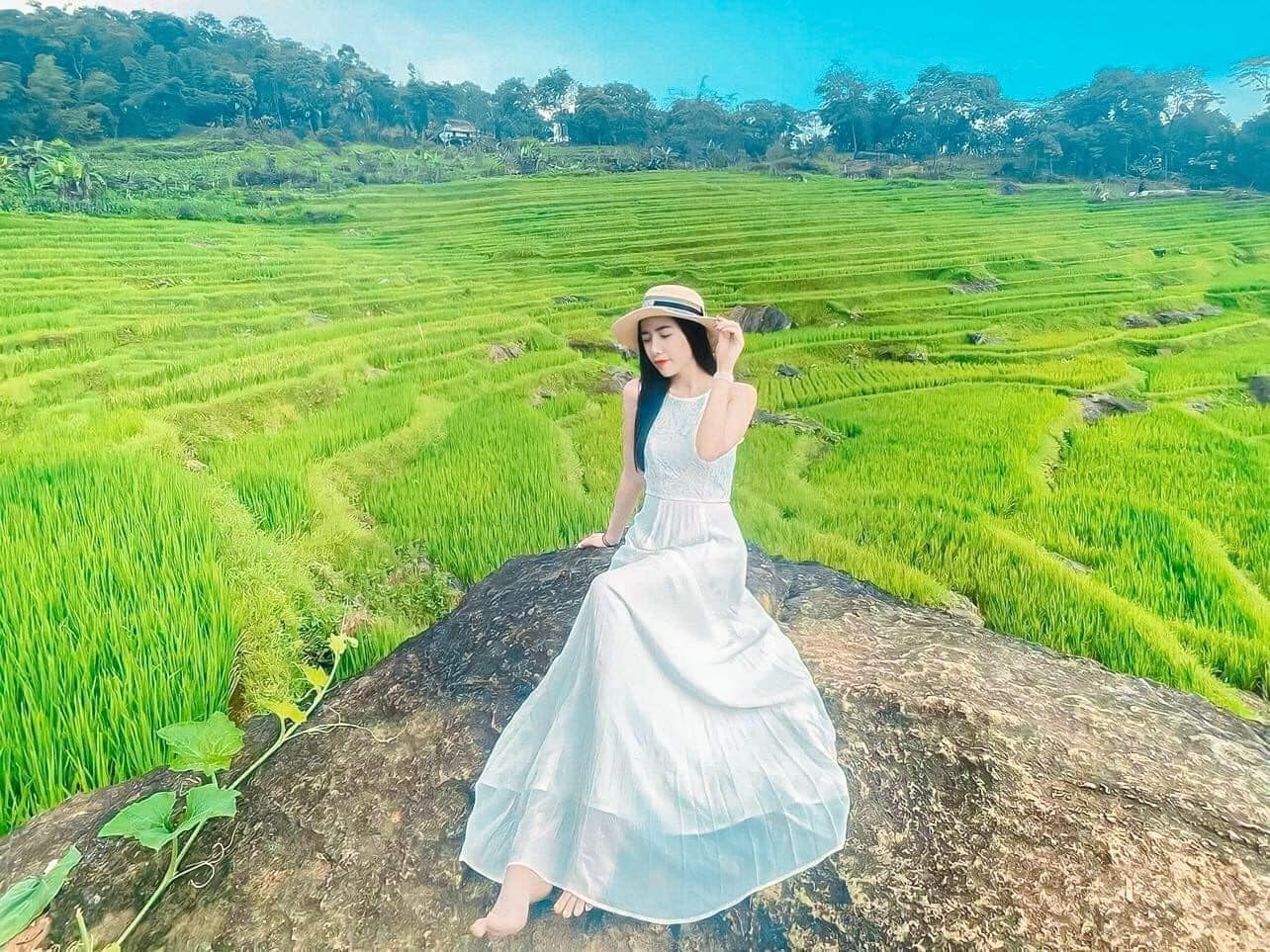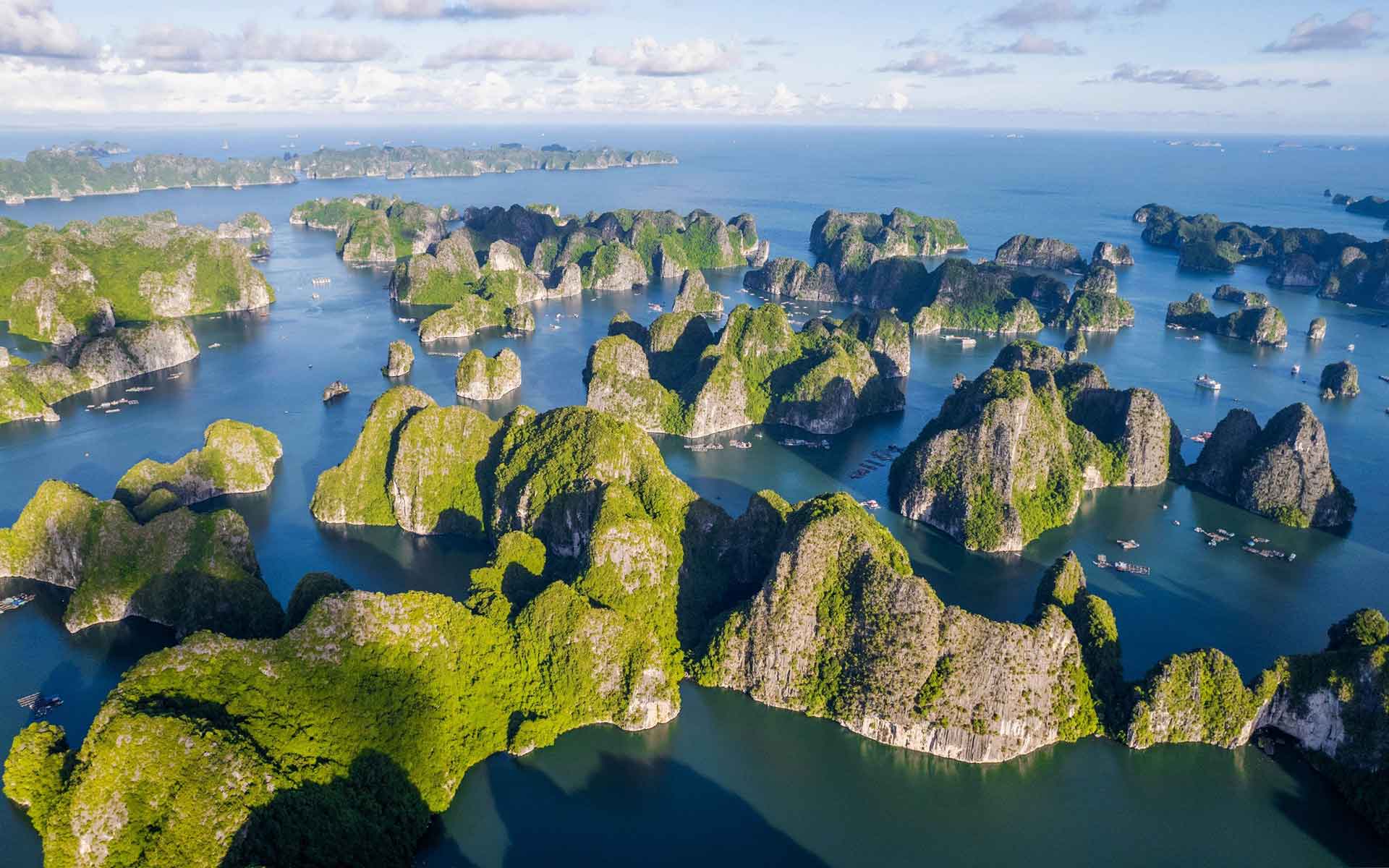Vietmountain travel
Express the life through each step !
Your destinations
Tour programme
- Period of tours
Favorite tours
Home:
Golden ticket: the rice terraces of Mu Cang Chai
Posted on: 2016-09-24 09:02:17
Mu Cang Chai in Vietnam’s northern highlands is a spectacular base from which to explore the country’s undiscovered rice terraces


The town of Mu Cang Chai lies in a valley at the foot of the Hoang Lien Son mountain range
The majestic man-made terraces are carved into the mountains, with rice fields stacked in increasing gradients to create fluid lines. Located just 100km south of the Chinese border, Mu Cang Chai can be reached via a winding road northwest from the capital, Hanoi, and is situated 1,000m above sea level.

Ethnic Hmong women cross a bridge on the way to the local market. Photo: Todd Brown
From February to April, the hills shimmer with dramatic beauty as the rice paddies, filled with water, create a mirror-like effect before turning a dazzling emerald green in May. Once the harvest begins in late September or early October and the ethnic Hmong gather their crops, the terraced rice fields range in colour from golden to toast-brown. The Hmong’s ancestors built the terraces way back in the 15th Century, according to experts, meaning that this ethnic group has been cultivating the rice paddies for more than 20 generations.

Stilted huts used for lodging and storage during the harvest are dotted among the rice terraces. Photo: Todd Brown
Ethnic hill tribes make up the overwhelming majority of the population in Vietnam’s rugged northwest. Across Yen Bai province, including Mu Cang Chai, the women dress in the same traditional attire they’ve been wearing for centuries. Each handmade piece is distinct to their ethnic group, and every pattern has tribal significance.

An ethnic Hmong woman harvests rice from a field. Photo: Todd Brown
One of the best ways to enjoy the rice terraces is to rent a motorbike and take to the open road. Each turn of a corner offers a fresh outlook, and climbing higher provides sweeping panoramic views of the terraces.

Carved rice terraces flow like ribbons across the landscape. Photo: Todd Brown
Although the area is largely anonymous outside the country, it is well known among the Vietnamese and is especially popular with groups from Hanoi. Nevertheless, accommodation options are rustic, visitors will likely find themselves experimenting with local cuisine and some knowledge of Vietnamese will prove helpful – all of which simply adds to the authenticity of a visit.

Golden and green rice terraces dominate the scenery. Photo: Todd Brown

A couple admires the beauty of the mountains in Mu Cang Chai district. Photo: Todd Brown

A woman carries a sack across the rice terraces near Mu Cang Chai. The town is an ideal base for exploring the terraced rice fields of northern Vietnam. Photo: Todd Brown
In the mountainous northern reaches of Vietnam lies a picturesque town inhabited by minority hill tribes and surrounded by soaring terraced rice fields. That description could easily be introducing Sapa, a well-known destination that has become a fixture on the Southeast Asia tourist trail. But this is Mu Cang Chai – largely undiscovered by guidebook-toting foreigners, the town offers the splendour of Vietnam’s famous rice terraces without the overbearing crowds.
The town of Mu Cang Chai lies in a valley at the foot of the Hoang Lien Son mountain range

Ethnic Hmong women cross a bridge on the way to the local market. Photo: Todd Brown

Stilted huts used for lodging and storage during the harvest are dotted among the rice terraces. Photo: Todd Brown

An ethnic Hmong woman harvests rice from a field. Photo: Todd Brown

Carved rice terraces flow like ribbons across the landscape. Photo: Todd Brown

Golden and green rice terraces dominate the scenery. Photo: Todd Brown

A couple admires the beauty of the mountains in Mu Cang Chai district. Photo: Todd Brown
Other news
HaLong Bay: Discover Vietnam’s Stunning Natural WonderPosted on : 08/04/2025Explore HaLong Bay, Vietnam’s UNESCO gem, with stunning islands, caves, and cruises. Plan your trip to this natural wonder today!... |
|
Pu Luong: Vietnam’s Untamed Jungle Paradise You Need to Explore Now IntroductionPosted on : 04/04/2025Discover Pu Luong, Thanh Hoa, Vietnam—a jungle paradise of rice terraces, waterfalls, and adventure. Plan your 2025 trip today!... |
|
Discover the Stunning Mu Cang Chai Rice Terraces: A Must-Visit in VietnamPosted on : 28/03/2025Discover Mu Cang Chai rice terraces: Watch Hmong mothers work the fields and join tourists paragliding over golden rice paddies in Vietnam’s stunning Northwest!... |
|
Trekking Fansipan – Conquer Vietnam’s Highest Peak in StylePosted on : 25/03/2025Trekking Fansipan is the ultimate adventure for those eager to conquer Vietnam’s highest peak. Rising 3,143 meters above Sa Pa, Lao Cai, this iconic mountain—known as the “Roof of Indochina”—offers stunning views, challenging trails, and a rewarding sense of achievement. Ready to explore what makes trekking Fansipan so special? Let’s dive in!... |

















Comments